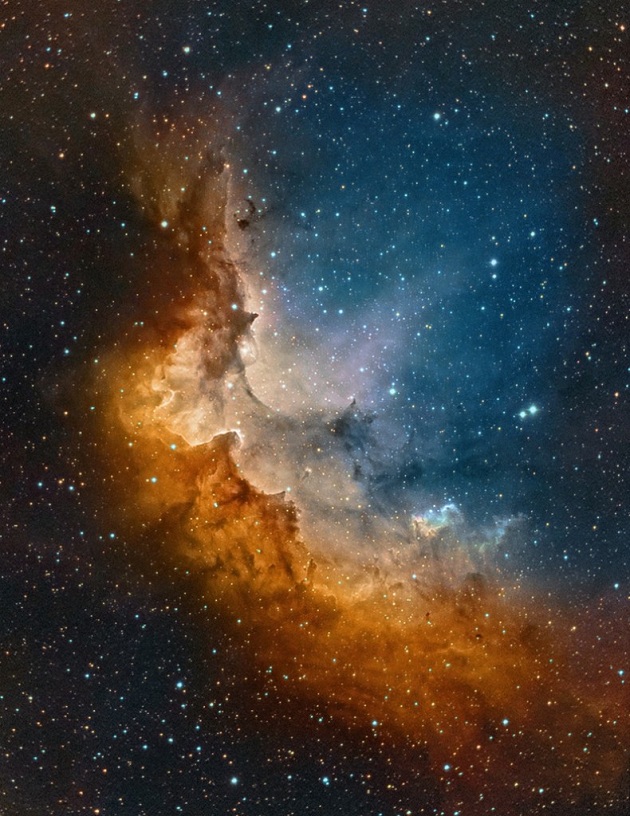By Annelies Rhemrev
November 22, 2012
The Wizard Nebula, a nebula surrounding the star cluster NGC 7380
Image Credit & Copyright: J-P Metsävainio (http://astroanarchy.zenfolio.com)
Click here for a larger image.
The Wizard Nebula (Sharpless 142 or SH2-142 for short) is a diffuse nebula surrounding the developing open star cluster NGC 7380. It spans about 140 × 75 light-years and lies within our Milky Way Galaxy, about 7,200 light years away in the constellation of Cepheus. It is moving toward us at 34.13 kilometers per second.
The name Sharpless comes from a catalog of 312 emission nebulae (H II regions). The first edition was published by Stewart Sharpless in 1953 with 142 objects (Sh1) and the second and final version was published in 1959 with 312 objects (Sh2).
This kind of nebulae are the birthplace of stars. They are formed when very diffuse molecular clouds begin to collapse under their own gravity, often due to the influence of a nearby supernova explosion. The cloud collapses and fragments, sometimes forming hundreds of new stars. The newly-formed stars ionize the surrounding gas to produce an emission nebula.
In this case, the stars of NGC 7380 have emerged from its natal cloud some 5 million years or so ago, making it a relatively young cluster. And, although the nebula may last only a few million years, some of the stars being formed may outlive our Sun.
The Wizard Nebula is ionized by the binary star HD215835 (DH Cephei), together with the many young energetic stars within the cluster. They make the nebula that surrounds them glow and their winds and radiation sculpt clouds of gas and dust into the mountainous ridges seen here.
This bright, active star-forming region is part of a much larger molecular cloud in Cepheus, called NGC 7380E, which total mass is estimated to be 6000-15000 solar masses.
This image was created in HST-palette (HST=Hubble Space Telescope) from the emission of ionized elements, R=Sulfur, G=Hydrogen and B=Oxygen.
See more images on Anne’s Astronomy News



